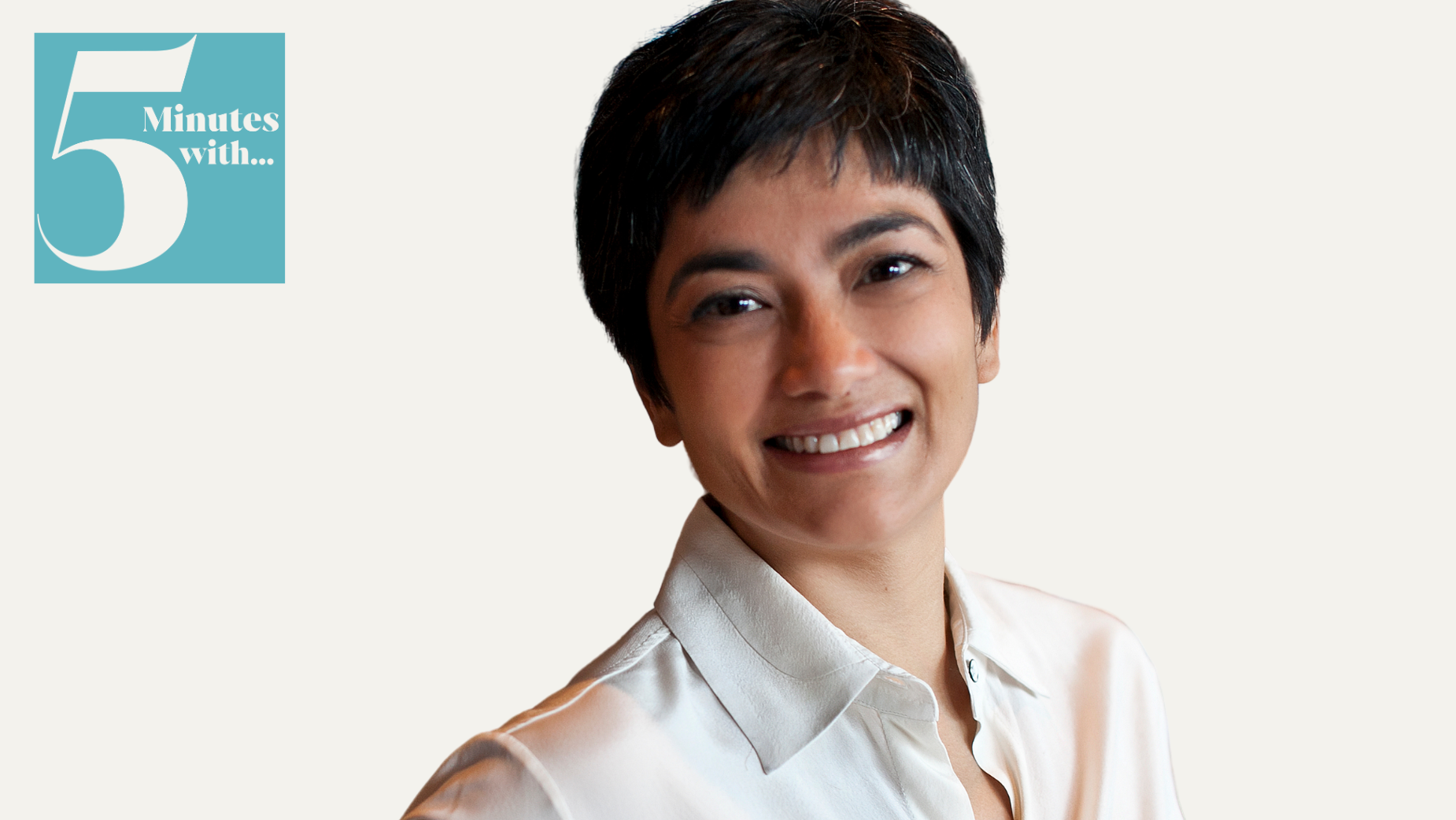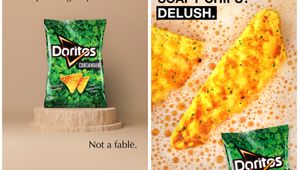
5 Minutes with… Melanie Cook

VaynerMedia APAC's head of strategy and insights brings a unique blend of creativity and strategic thinking to her leadership.
Melanie believes that modern brands are not built in the boardroom, but rather through direct consumer engagement on social media.
She crafts impactful strategies that resonate with diverse audiences across the APAC region by harnessing cultural insights and emerging trends.
Speaking to LBB’s Tom Loudon, she breaks down the importance of trust and self-determination in empowering teams, the integration of generative AI and digital models, and the shift towards a consumer-up brand-building strategy.
LBB> Have you always been a creative person, even as a child?
Melanie> If you consider collecting stickers and smelly erasers creative, then yes! I’m not creative in the traditional sense, which for me usually means drawing or creative writing, but I have always loved to express myself through everyday things around me. I still have my sticker book collection to pass on to my daughter when she’s older.
LBB> Can you share some key experiences from your diverse career that have shaped your leadership style and strategic approach?
Melanie> First, I’d like to thank you for calling out diversity in my career –– I love my squiggly career! These days, few of us are in the same company for life. Most of us, at some point or another, will go through redundancy or an agreed separation, as I did. It’s scary, but know what got you the job in the first place is still with you. The experience of actively getting to know me better –– my unconscious bias, my triggers, and my optimism bias –– has been priceless in navigating a path less trodden, from being a database manager of a football club to shaping marketing of the now. As a leader, I’ve learnt that leaning in with trust is the most empowering behaviour for the people you work with. It puts the onus of accountability on your team members and gives people the space to do it their way. Inevitably, I find that they will surprise and delight. And if not, you can have an open conversation with candour about what needs to be done better.
LBB> How do you foster adaptability and resilience in your teams during times of significant transformation?
Melanie> I give them self-determination and insist on curiosity about technology's role in their life and work. My talk on TED.com speaks about the accidental automation of motherhood. What on earth is that? The talk concerns our reliance on machine-approved certainty and how it is being removed from our human agency. If this can happen in motherhood, imagine technology's foundational shifts across our work and life. Delve into generative AI, get to know it, and treat it as another team member at the table –– be it at the board level or when you’re client or customer-facing. Integrate it into your workflows because it will give you the adaptability and resilience you need to thrive. Ignore generative AI, and you are throwing away your self-determination.
LBB> You’ve integrated digital into traditional models during your time at agencies. What were some of your biggest challenges and successes in that process?
Melanie> FEAR. Full stop. Encountering it and the sweet release from it.
When I asked Gary Vee (my ultimate boss) how to help our clients overcome the fear of leaving behind the old playbook that served us so well since the dawn of print advertising, he said to make it common sense. Even though all the evidence points to how essential it is and your heart knows it has to be done, the fear of doing something new is paralysing when you are moving models.
We use social media daily; it informs our purchases, views, behaviours, and likes – and triggers our dislikes. A minuscule percentage of one-way advertising informed by the boardroom rather than culture can do that. However, the boardroom does have the ultimate power over our livelihoods, and that’s the elephant in the room that is nigh on impossible to move past if people don’t see that sticking to an old model in a new era will degrade their performance at work.
Because most of us have to get to that point before we change, fear is also the source of our successes. When people integrate the new model and see how it connects with consumers and subsequently positively impacts their work performance, few things can give you that rush.
LBB> How does diversity of thought at an agency contribute to addressing client complexities?
Melanie> I learnt the concept of Jugaad from an Indian poet while exploring innovation for a technology client. Jugaad is a behaviour that describes ‘using skill and imagination to find an easy solution to a problem, or to fix or make something using cheap, basic items’.
None of our clients come to me and say there's a simple problem and they’d like to spend loads to fix it. All problem-solving requires Jugaad; the more diversity you have, the bigger the collective imagination and skill base. That is why social media is such a gift to marketers. You can access five billion social media users’ cultural shaping skills and imagination for free. By being prolific in connecting to people in the social space, you will always find a solution – no matter how complex the problem.
LBB> Can you elaborate on the ‘consumer-up’ strategy you advocate for and how it differs from traditional approaches in shaping brand narratives?
Melanie> Simply put, consumers build brands in social, not boardrooms. Take Apple, for example –– well, that’s brave. Apple is one of the few brands that can continue to create a successful brand in the boardroom because its product is so good. If you listen to YouTubers like Marques Brownlee, who make or break tech launches, you will also see that Android is winning in culture.
It used to be that we would do consumer research, read a Reddit thread and maybe gain insight from some expensive ‘future of’ research. Then, we’d ask brilliant creative minds to develop three ideas and ask an equally subjective client to choose between them for their multimillion-dollar campaign.
But I say again: Brands aren’t made in boardrooms but in the social space! Today, brands need to adjust to the truth in consumers' lives in real-time. With the TikTokification of the social space, where brands find their buyers through algorithms that distribute based on interest regardless of their follower size, relevance to your target audience is everything. We need to turn the model upside down now. Use your extraordinary creative and strategic minds to produce social-first creative against consumer segments to win on relevance, get distribution to millions of consumers, let them tell you what they want to engage in, and then extract consumer insights to inform what you want to bet your multimillion-dollar campaign on.
LBB> What strategies do you employ to build high-performing teams equally passionate about consumers and internal culture?
Melanie> What a great question.
Hiring is one of the most nerve-racking experiences for me. It feels unnatural to decide if we are suitable for someone in three or four meetings. I look for someone who is ambitious to learn, has that va va va voom beyond their current role, and, most importantly, can speak about the strengths and deltas that exist in their current team. This applies whether you are a grad fresh out of university or a seasoned senior like me!
For more junior roles, I ask people to problem-solve. I like to send them on a data treasure hunt to solve a marketing mystery. The more senior the potential teammate, the less I ask about skills, and the more I ask about their passions and values, what happens in situations that require kind candour, and problem-solving skills. Lately, I’ve also wondered about technology's role in their life, particularly generative AI, as I believe it is the magnifying glass that can scale the art of insight. What we do is not rocket science –– however, being and growing with people is an art that requires humility and quick wit.
LBB> How do you leverage cultural insights and emerging trends to create strategies that resonate with authentic audiences in the APAC region?
Melanie> You know, this is the best bit of my job. I get paid to be nosey and interested in culture and platforms! All the regional strategists, from Japan to India, Southeast Asia to Australia, are post-creative strategists. The majority of strategists are pre-creative strategists. We do our research, write a brief, send it to the creative team, rinse and repeat for the next campaign…
But let's take a step back for a moment. When you post something on Instagram Reels, YouTube or TikTok, what do you do the minute, hour and day after you post? You check who's liked, followed, saved or subscribed. And when someone has taken the time to comment, you dive deep into their comment. Who are they, what do they mean, why did they say what they did, how should I respond? That is how you connect with people in the social space, where the cultural insights lie.
For emerging trends, we look at constellations of insights that point to where attention is going and how this will change behaviour. All the insight in the world will get you only so far. At VaynerMedia, we make with intention. That means strategists are obliquely positioned to look at a media target in all its technicolour and speak to each one of those colours.
To ‘yes and’ your question, I would add “platform insights”.















